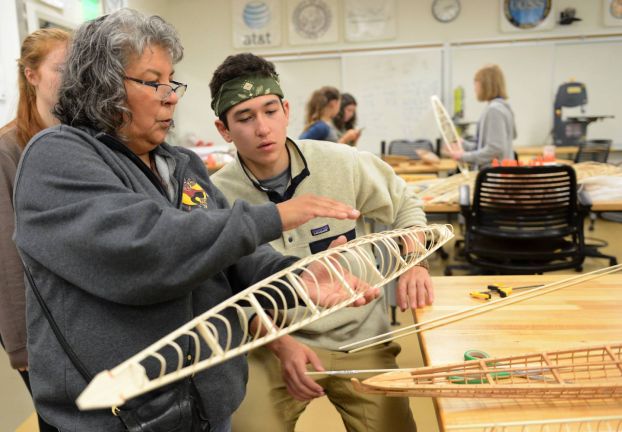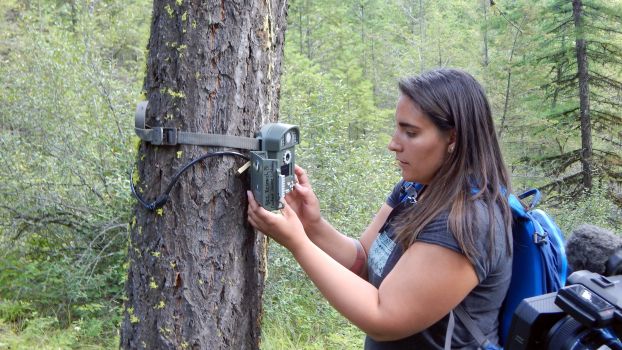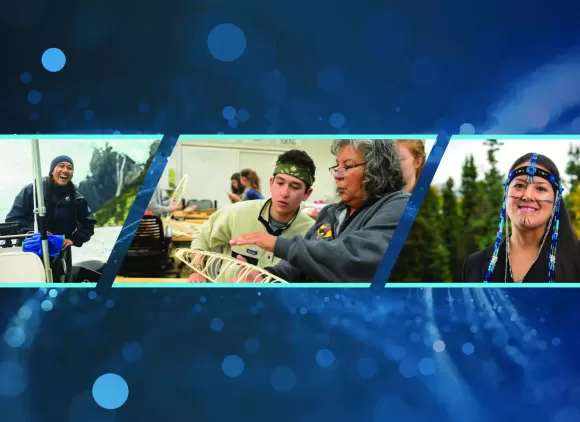Funding for Tribal Nations
For over 50 years, NSF has proudly supported the growth of STEM research and education at tribal colleges and universities.
Explore programs that are especially suitable for proposals led by federally recognized American Indian and Alaska Native tribes (Tribal Nations) below.
This 20-minute video showcases research being conducted by students and faculty at tribal colleges and universities and provides insights into the students’ academic success and aspirations and what STEM research means to them.
Tribal Colleges and Universities Program
NSF's Tribal Colleges and Universities Program (TCUP) provides awards to federally recognized tribal colleges and universities and eligible Alaska Native- and Native Hawaiian-serving institutions.
The program aims to increase Native individuals' participation in STEM careers by expanding the breadth and depth of STEM programs at eligible institutions and facilitating the development of a strong STEM enterprise in these institutions' service areas.
The program supports transformative capacity-building or community engagement projects through several strands:
Instructional Capacity Excellence in TCUP Institutions: Supports designing and implementing comprehensive institutional advances in STEM education and research capacity at eligible institutions.
Targeted STEM Infusion Projects: Supports the attainment of a short-term, well-defined goal to improve the quality of STEM education.
Small Grants for Research: Supports research studies that further the scholarly activity of individual faculty members.
TCUP Partnerships: Supports collaborations led by tribal colleges and universities that involve non-tribal institutions of higher education. With these projects, other NSF programs support the work of the non-tribal collaborating institutions.
Tribal Enterprise Advancement Centers: Builds upon the STEM capacity of tribal colleges and universities by positioning their faculty and students as intellectual partners to address STEM needs or aspirations of the community they serve.
TCUP Secondary and Elementary Teachers of STEM: Supports K-12 STEM teachers in tribal colleges and universities' communities to increase their content knowledge of STEM disciplines and enhance their expertise in sharing that knowledge with students, colleagues and community members.
Cyberinfrastructure Health, Assistance, and Improvements: Supports projects at eligible institutions to upgrade the cyberinfrastructure necessary to conduct, expand, manage and administer STEM research and education programs.
Preparing for TCUP Implementation: Supports activities that prepare an institution for implementation-level projects. Examples of supported activities include completing an assessment of an institution's current STEM instructional capacity or engaging in conversations necessary to formulate a shared vision of what that capacity should be and how to achieve it.

Credit: Bob Hallinen / ADN
Arctic community engagement
Given the expert knowledge held by Indigenous and local communities in the Arctic, NSF recognizes the importance of engagement with Arctic residents and leadership and encourages collaborations that improve NSF-funded research.
NSF encourages the following types of collaborations:
- Research at sites near local and Indigenous communities.
- Community engagement and outreach.
- Developing the next generation of researchers and Indigenous scholars.
- Co-producing knowledge to address shared research questions, pursue shared methodologies, and agree upon appropriate outreach and data sharing activities.
Learn more on NSF's Arctic Community Engagement page.
Additional funding opportunities to support the co-production of knowledge and include Indigenous people and organizations in Arctic research can be found on NSF's Office of Polar Programs page.

Credit: Rob Margetta / National Science Foundation
Other NSF programs that support Tribal Nations
The following programs focus on equity in leadership, development and impact and support many tribal-led awards or are especially suitable for tribal-led proposals:
- Advancing Informal STEM Learning (AISL)
- NSF Eddie Bernice Johnson Inclusion across the Nation of Communities of Learners of Underrepresented Discoverers in Engineering and Science Initiative (INCLUDES)
- Innovative Technology Experiences for Students and Teachers (ITEST)
- Racial Equity in STEM Education (EHR Racial Equity)
Additional programs that encourage submissions from tribes include:
- Advanced Technological Education (ATE)
- CyberCorps Scholarship for Service (SFS)
- Computer Science for All (CSforAll)
- Discovery Research PreK-12 (DRK-12)
- Dynamic Language Infrastructure - Documenting Endangered Languages
- Established Program to Stimulate Competitive Research (EPSCoR)
- Faculty Early Career Development Program (CAREER)
Research highlights
Explore some of the ways that NSF work intersects with tribal interests.
Center for Braiding Indigenous Knowledges and Science
This NSF-supported center investigates environmental change and its effects on food and cultural systems by combining Indigenous knowledge with Western science in new, effective and ethical ways.
New grants and fellowships announced to document endangered languages
Among this round of awards is a fellowship to support work on an online dictionary and grammar for the Muskogee language of eastern Oklahoma.
NSF funds new projects to study local and global impacts of a rapidly changing Arctic
Each project focuses on one or more of the following topics: Arctic residents, data and observation, education, forecasting, global impacts and resilient infrastructure.
Cultivating Indigenous research communities for leadership in education and STEM
The new INCLUDES Alliance spans six states: Idaho, Montana, New Mexico, North Dakota, South Dakota and Wyoming.
Improving preparedness and resilience to post-wildfire flooding in Native American communities
This project, funded by NSF's Civic Innovation Challenge, supports Native American Pueblo communities in designing and building wireless sensors to assist in wildfire management and provide early warning when fires and floods occur.
Equipping underserved communities with ocean intelligence platforms
This project empowers Indigenous and other coastal communities to collect and use ocean data to support their blue economy: maritime activities, food security and coastal hazard protection.
Information for PIs working with Tribal Nations
Principal investigators seeking to conduct research involving Tribal Nation resources and interests should be aware of NSF’s Proposal & Award Policies & Procedures Guide (PAPPG) (NSF 24-1) Chapter II.E.10, Seeking and Obtaining Tribal Nation Approval for Proposals that May Impact Tribal Resources or Interests. Projects that do not have prior written approval from the official(s) designated by the relevant Tribal Nation(s) will not be awarded by NSF.
Principal investigators may explore the additional resources below, which provide information on how to identify Tribal Nation contacts.
U.S. Department of Interior Tribal Leaders Directory
DOI’s directory provides contact information for each federally recognized Tribal Nation.
Additional resources
- U.S. Department of Interior Tribal Liaison Officers and Points of Contact: DOI’s tribal liaison officers may be consulted as appropriate.
- Tribal Climate Resilience Liaison Network: This nationwide network of tribal liaisons is part of a collaboration between USGS, The Bureau of Indian Affairs and Tribal Nations and organizations.
- Tribal Historic Preservation Officer Directory: This directory may be consulted by PIs seeking to conduct research that may affect cultural resources of relevance to Tribal Nations.
- EPA’s Toxics Release Inventory Program Tribal Contacts: A directory of officials who receive reporting forms from Toxics Release Inventory facilities located on the lands of federally recognized tribes.
NSF tribal engagement and consultation
NSF respects the sovereignty and self-governance of American Indian and Alaska Native Tribal Nations and is dedicated to fostering sustained and meaningful relationships as it carries out its mission.
NSF engages with tribes whenever tribal interests or resources are potentially impacted as a result of proposed NSF funding; this activity is part of NSF's responsibilities under Section 106 of the "National Historic Preservation Act."
In 2021, NSF developed and began implementing the Action Plan of the National Science Foundation to Enhance Tribal Consultation, which reflected verbal and written comments from Tribal Nations and members of tribes.
Contact us
For general questions about NSF, including funding, contact Tribal.engagement@nsf.gov.

